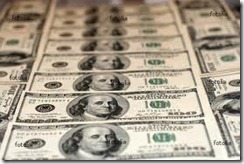
Whatuwantnow - U.S. paper currency isn't printed on normal wood pulp paper, but a specially durable "currency paper." This extraordinary material can withstand wear and tear that would cause every day paper to fall apart. Special security features are built into the material to prevent illegal counterfeiting of paper currency.
First Uses
Paper currency was used early in China, printable by Chinese block-printing. Paper currency had two main advantages: it was easy to carry and it saved on metallic natural resources like silver and copper. The paper money was used to make government purchases in distant areas, where the paper currency, or bank note, could then be exchanged for real money at the capital. China officially adopted paper currency during the Song Dynasty (960-1279). These notes had no actual value; they were not made with any precious material, but were still used as currency. Silk Notes
When the Mongols came to power they created a form of paper currency called silk notes. Although the silk notes were not made of gold or silver, they did have real value in the silk yarn from which they were made. The government exchanged all old forms of paper currency into silk notes and unified the country's currency. By 1294, the silk notes were in use as far away as Persia. Material
"Currency paper" is a special blend of 75% cotton and 25% linen fibers, with threads of red and blue fibers mixed in for extra security. Extra security
Security threads were added in 1990s to prevent counterfeiters from bleaching small bills and reprinting them. The security threads show the bill's denomination. One and two dollar bills do not have this feature. Inks
U.S. currency is printed with color shifting inks on the lower left side of the front of the bill. The ink shifts from green to black when tilted. Colorful currency
The U.S. government changed the look of its currency in 2003 when it added color to the $20 dollar bill. Since then the $5, $10, $50 and $100 dollar bills have also been updated with colored ink. Old money
Old and worn out money is removed from the system when it passes through the Federal Reserve Banks. Money that is too worn is shredded and either sent to land fills or packaged as souvenirs. Life span
The $5 dollar bill has the shortest average life span, only lasting 16 months in circulation. Next is the $10, which lasts an average of 18 months, and the $1 for 21 months. $100 tend to last for seven years before wearing out.
 9:32 PM
9:32 PM
 sak
sak


 Posted in:
Posted in: 











0 comments:
Post a Comment